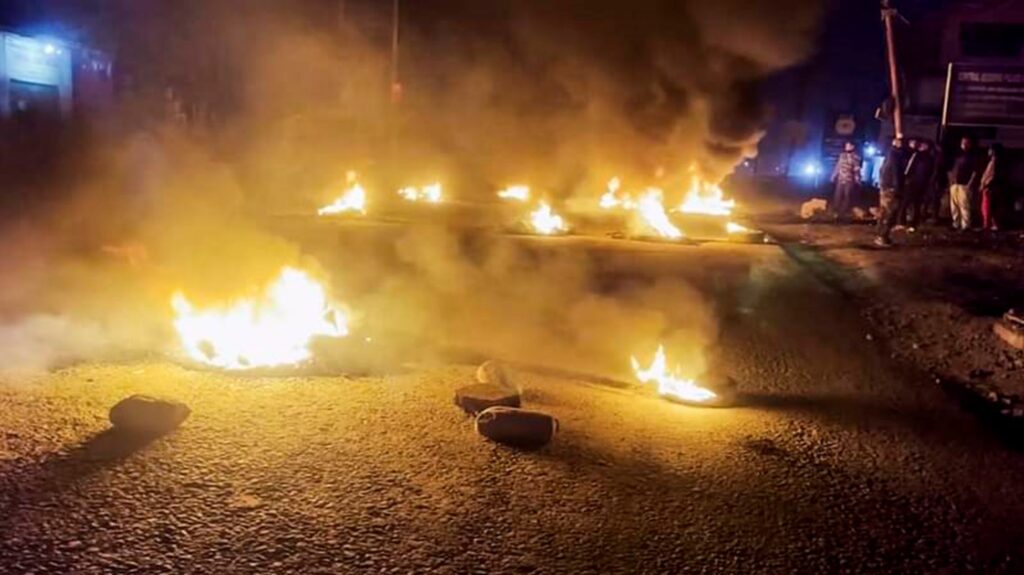In light of continuing ethnic clashes in Manipur, the Union Ministry of Home Affairs (MHA) has announced the termination of the Free Movement Regime (FMR) between India and Myanmar. The MHA has also unveiled plans to fence the entire 1,643 km Indo-Myanmar border in a bid to prevent unauthorized movement of people. The border spans four northeastern states—Arunachal Pradesh, Nagaland, Manipur, and Mizoram—where communities on either side share strong cultural and familial ties.
What is the Free Movement Regime (FMR)?
Introduced in 2018 as part of India’s “Act East” policy, the FMR allowed indigenous tribes along the India-Myanmar border to travel up to 16 kilometers into the neighboring country without requiring a visa. The agreement, rooted in historical and ethnic connections dating back to British colonial times, aimed to promote local trade and economic exchange, as well as cultural interactions. Despite these benefits, the arrangement has been increasingly criticized for facilitating illegal immigration, drug trafficking, and arms smuggling.
Strategic Importance of Myanmar to India
Myanmar holds significant geopolitical importance for India, offering a land bridge between South Asia and Southeast Asia. This strategic position is critical for regional connectivity and trade. India’s relations with Myanmar are central to its broader foreign policy, notably the “Neighborhood First” and “Act East” initiatives. These policies emphasize the importance of strong ties with Myanmar to counterbalance China’s growing influence in the region.
India has undertaken several key projects in Myanmar, including investments in the oil and gas sector, as well as infrastructure projects aimed at boosting connectivity. Myanmar’s membership in ASEAN and its participation in other international forums also make it an essential partner for India in the region.
India-Myanmar Projects and Strategic Defense Ties
India has made significant investments in Myanmar’s energy sector, including a $722 million investment in oil and gas projects. Despite setbacks in securing a gas pipeline deal, India continues to engage with Myanmar in energy projects, positioning itself as a key player in the China-Myanmar gas pipeline project.
In addition, the two countries have bolstered defense cooperation through military training and joint exercises. India also supports Myanmar in regional infrastructure initiatives, such as the Kaladan Multi-Modal Transit Transport Project and the India-Myanmar-Thailand Trilateral Highway Project, which aim to improve trade and connectivity between the nations.
New Restrictions and Border Management
The scrapping of the FMR has been met with mixed reactions, particularly from local communities in Nagaland, Mizoram, and Manipur. In place of the FMR, the MHA has introduced a new system to allow cross-border movement for people residing within 10 kilometers of the border. Under this system, individuals can apply for “border passes,” which allow them to stay in the designated border area for up to seven days. These passes will be granted for purposes such as visiting relatives, business, tourism, medical treatment, and cultural exchanges.
Eight pilot entry/exit points have been established along the border, with plans to expand to 35 additional points in subsequent phases. While this system aims to maintain cross-border connections, it seeks to address security concerns associated with the porous border, including the smuggling of drugs and arms, as well as the movement of insurgents and illegal immigrants.
Security Concerns and the Need for Fencing
The India-Myanmar border has long been a source of security challenges due to its porous nature and lack of effective surveillance. The region is home to insurgent groups, many of which operate with support from Myanmar’s border areas. The ongoing instability in Myanmar, particularly following the 2021 military coup, has further complicated the situation, with various ethnic and insurgent groups waging a war against the military junta.
To address these security issues, the Indian government has proposed fencing the entire border, with work already underway in Manipur. The new border management strategy is seen as essential for preventing illegal activities and strengthening internal security, especially in the context of insurgent activities in the northeast.
Conclusion
The termination of the Free Movement Regime and the fencing of the Indo-Myanmar border marks a significant shift in India’s approach to managing its northeastern borders. While these measures are necessary to address security concerns, it is crucial for India to maintain diplomatic engagement with Myanmar to preserve strong bilateral ties. Continued infrastructure projects, such as the Kaladan and Trilateral Highway, will be key to ensuring regional connectivity and economic cooperation. Balancing national security with the needs of local communities will be critical as India navigates its complex relationship with Myanmar amid growing regional tensions.



